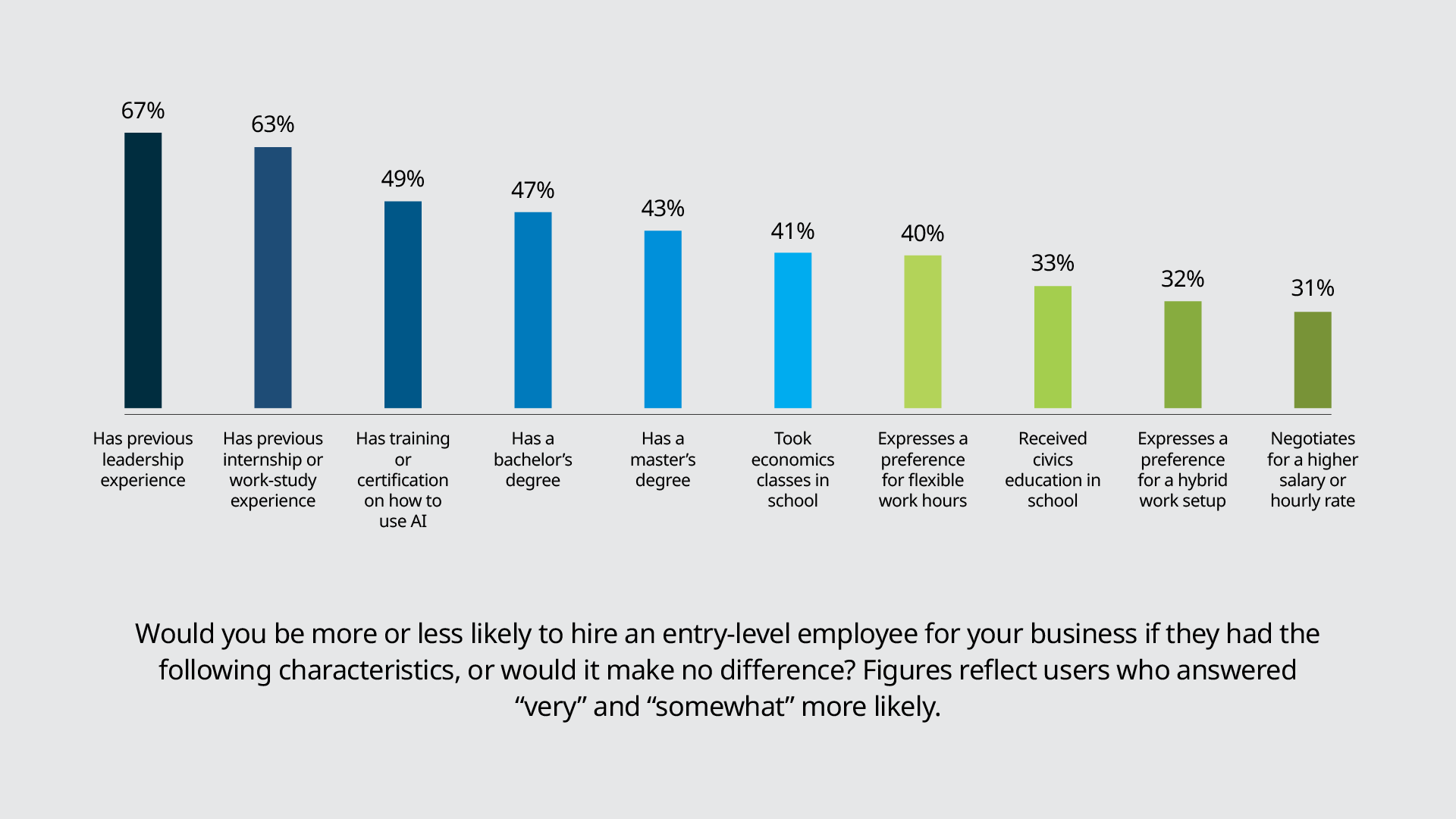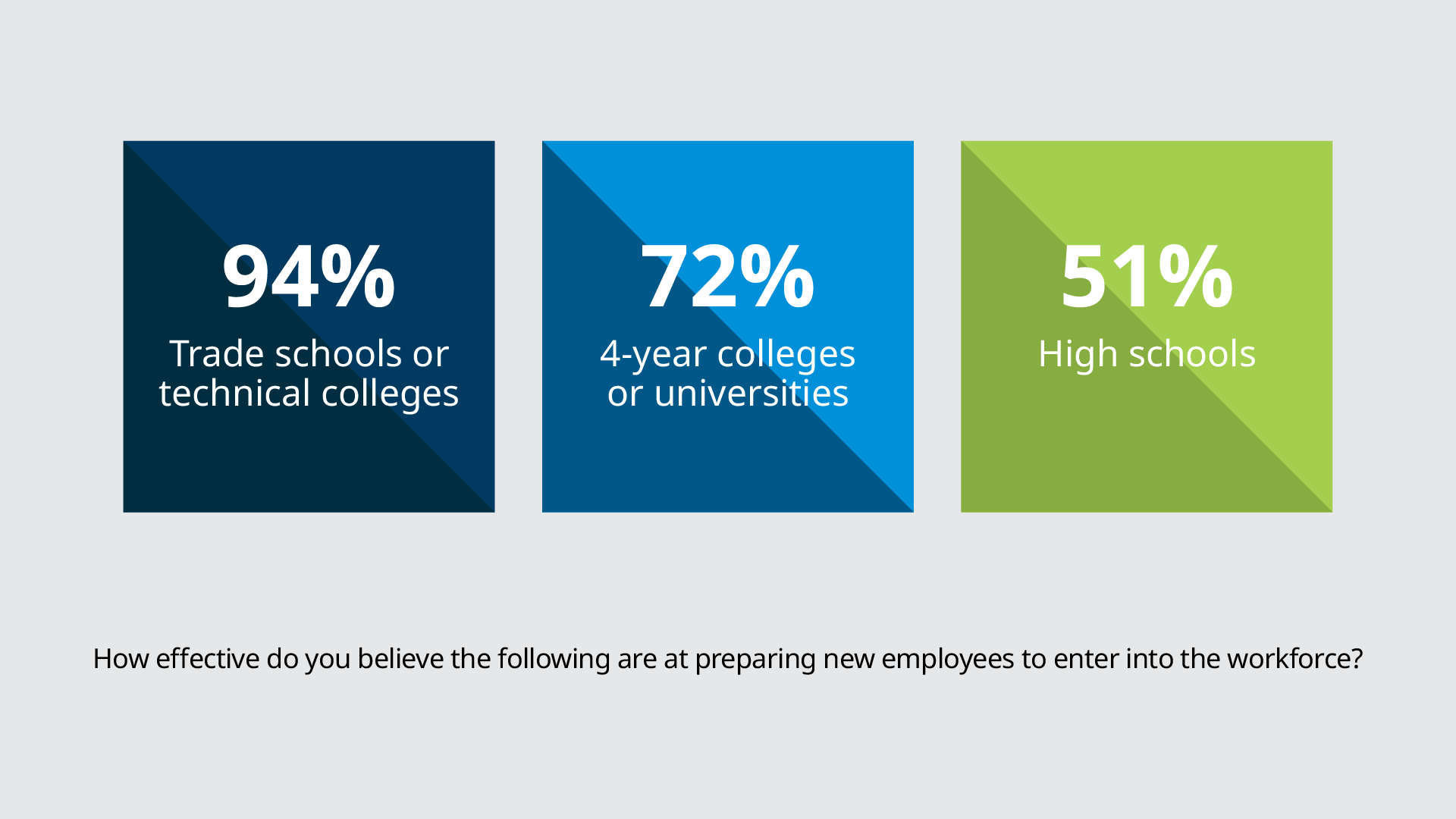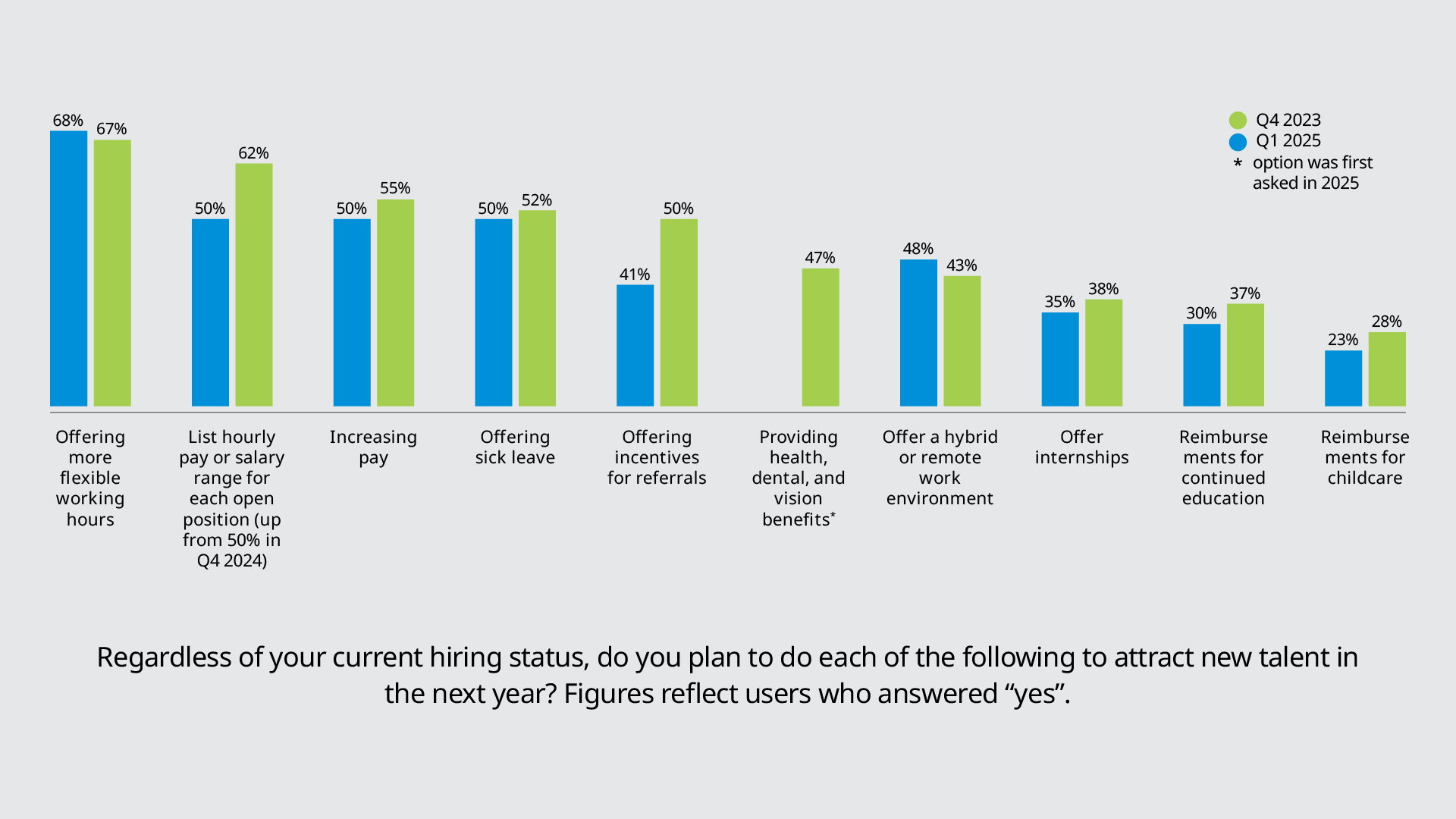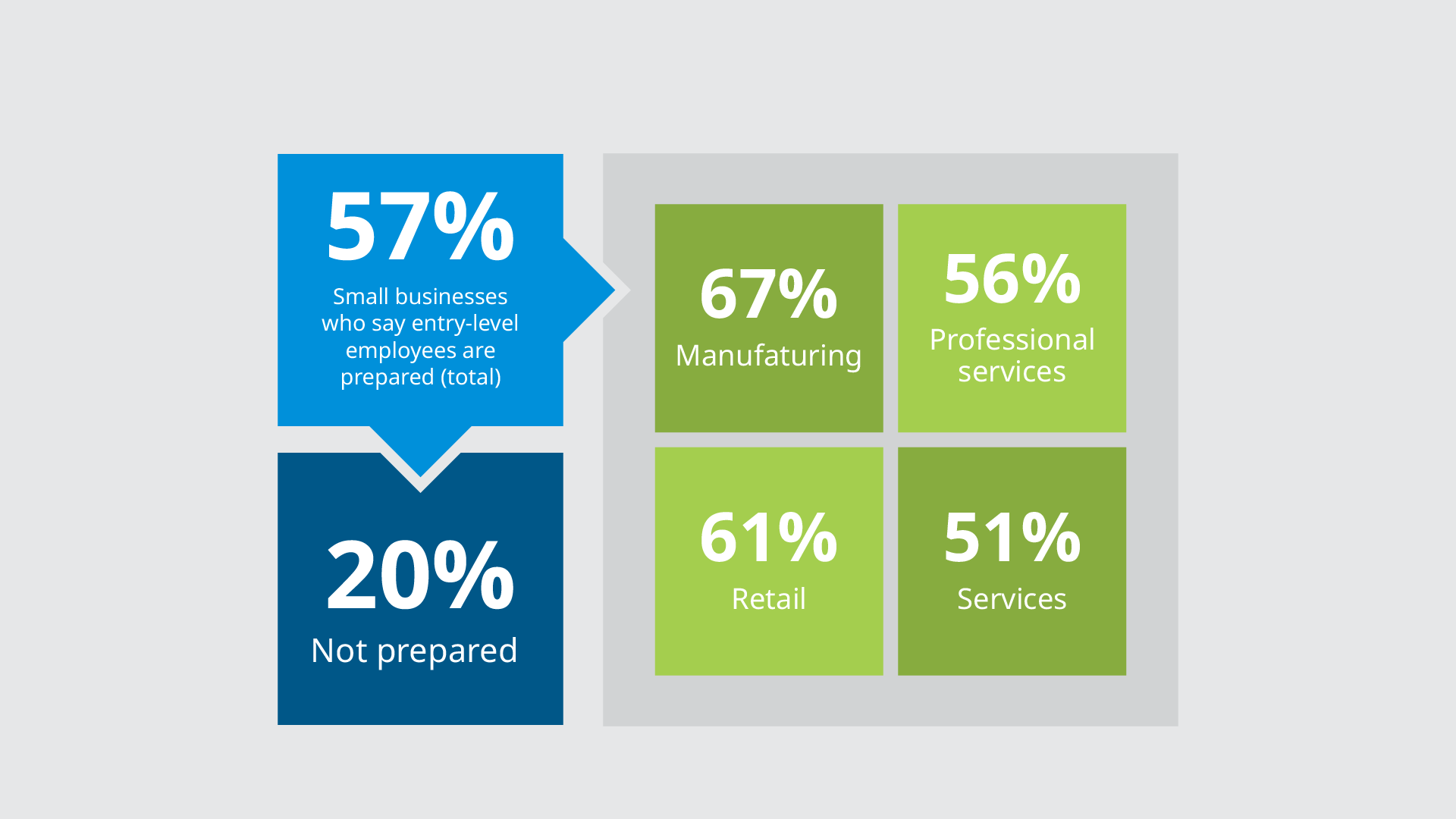Small businesses set sights on next-gen leaders, but views on employee readiness vary
Key Takeaways
- With Gen Z set to comprise 30% of the global workforce by 20301, small businesses are rolling out the welcome mat for new talent
- Two out of three (67%) small businesses put a premium on leadership chops when hiring fresh faces, ahead of work experience and education
- Only 57% of small businesses believe entry-level employees are prepared for the workforce. One in five owners say they’re still not prepared.
It's official: Gen Z employees (18%) outnumbered Baby Boomers (15%) in the workforce as of 20242. By 2030, it's estimated that one in three employees will belong to Gen Z.
For many small businesses, Gen Z will soon make up a significant portion of its entry-level employees. What does this mean for small business owners? What are the latest small business hiring trends? And how are owners handling this change? The Q1 2025 Small Business Index, a joint report presented by MetLife and the U.S. Chamber of Commerce, uncovered some surprising insights.
Leadership and work experience trumps credentials
Small businesses strongly prefer entry-level candidates with leadership (67%) and work experience (63%) over those with only educational credentials. This preference is most pronounced in professional services (71%) and manufacturing (69%), compared to services (57%) and retail (54%).
While education still matters, practical experience takes precedence. For example, 49% of small businesses are more likely to hire candidates with AI training, ahead of those with bachelor's degrees (47%), master's degrees (43%), or economics coursework (41%). This trend reflects small businesses' adaptation to technological changes and the desire for candidates with both practical experience and relevant skills.
Trade schools outclass traditional education in workforce prep race
Small businesses overwhelmingly endorse trade schools and technical colleges, with 94% rating them very or somewhat effective at preparing new workers for the workforce. This significantly outranks both 4-year colleges (72%) and high schools (51%). This view is consistent across most business types, though the smallest businesses (1-4 employees) are slightly less confident in 4-year colleges' effectiveness at 68%.
Flexible working hours, salary transparency, and better benefits move the needle on talent
Small businesses are pulling out all the stops to attract new talent. The most popular offerings include flexible working hours, compensation transparency, increased pay, and sick leave. Notably, younger business owners, particularly Gen Z and Millennials, are more likely to offer salary transparency (74%) compared to older generations. Regionally, Southern small businesses are more likely to offer transparency than those in the Midwest (68% vs. 54%).
Most small businesses believe their entry-level employees are prepared for the workforce. But one in five still think otherwise.
Small businesses generally believe their recent entry-level hires are well-prepared for the workforce, with 57% saying they are ready. In contrast, only 20% think these new employees aren't prepared. They also view applicant quality as good or very good, with 59% holding this opinion—a marked improvement from 2017, when most thought candidates were just fair or poor.
Zooming in, we find that larger businesses (more than five employees) are significantly more confident in entry-level preparedness (75-77%) compared to the smallest businesses (46%). Manufacturing businesses (67%) report the highest satisfaction with entry-level preparedness, while service sector businesses report the lowest (51%).
Change starts now
Gen Z workers clearly value more than just competitive pay. They prioritize quality of life and comprehensive benefits packages as essential components of job satisfaction. Small businesses must acknowledge this shift in workplace expectations and expand their benefits offerings accordingly. MetLife's Small Market Experience allow smaller companies to level the playing field by offering benefits on par with those of Fortune 500 firms. Now any business can build cohesive teams that drive long-term, sustainable growth, without breaking the bank.



